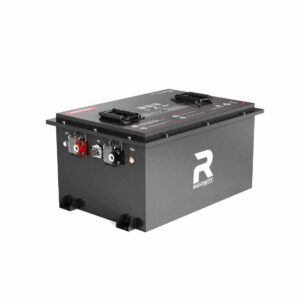Which RV Battery Types Offer the Best Energy Density for Compact RVs?
FAQ: Lithium-ion batteries, particularly LiFePO4 (lithium iron phosphate), are the best RV battery type for improving energy density in compact RVs. They provide 2-3 times higher energy density than AGM or lead-acid alternatives, enabling lighter weight, longer runtime, and space-efficient designs. Their stable chemistry and deep-cycle capabilities make them ideal for energy-conscious RVers prioritizing compactness and performance.
How Do Lithium-Ion Batteries Outperform Traditional RV Batteries in Energy Density?
Lithium-ion batteries, especially LiFePO4, deliver 100-150 Wh/kg energy density compared to 30-50 Wh/kg in AGM or lead-acid batteries. This allows compact RVs to store more power in smaller footprints. For example, a 100Ah LiFePO4 battery weighs 30-50% less than an AGM equivalent while offering deeper discharge cycles (80-100% vs. 50% in lead-acid) and faster recharging via solar or shore power.

The energy density advantage becomes particularly apparent in multi-day boondocking scenarios. Where a traditional lead-acid system might require four 6V batteries weighing 130 lbs to provide 300Ah capacity, a lithium setup achieves the same capacity in a single 31 lb battery. This weight reduction directly impacts fuel efficiency – every 100 lbs removed from an RV improves gas mileage by 1-2%. Furthermore, lithium batteries maintain voltage stability throughout discharge cycles, ensuring consistent performance for sensitive electronics like refrigerators and medical devices.
What Are the Key Differences Between LiFePO4 and AGM Batteries for Compact RVs?
| Feature | LiFePO4 | AGM |
|---|---|---|
| Energy Density | 120-160 Wh/L | 60-80 Wh/L |
| Cycle Life | 3,000-5,000 | 500-1,000 |
| Efficiency | 95% | 80% |
| Cost per kWh | $600-$800 | $200-$300 |
What Future Technologies Could Further Improve RV Battery Energy Density?
Solid-state lithium-metal batteries (500+ Wh/kg) and lithium-sulfur (400 Wh/kg) prototypes promise 3-5x density gains by 2030. Current R&D focuses on silicon-anode Li-ion (20-40% improvement) and graphene-enhanced cells. Redway’s engineers note that hybrid systems pairing LiFePO4 with supercapacitors may soon offer instantaneous load handling for RVs with high inrush currents from inverters or air conditioning.
Emerging battery architectures are solving historical limitations of high-density technologies. For instance, lithium-sulfur batteries previously suffered from rapid capacity fade, but new electrolyte formulations have extended cycle life to 400+ charges. NASA’s work with sulfur selenium batteries shows promise for extreme temperature operation (-40°C to 60°C). For RVers, this could mean batteries that self-heat in winter conditions while maintaining 90% capacity at -30°C – a game-changer for Arctic expeditions.
“Modern LiFePO4 batteries revolutionize compact RV design by enabling 300+ Ah capacities in sub-25kg packages. At Redway, we’ve seen 40% fewer weight-related warranty claims since transitioning customers from AGM to lithium. The next frontier is modular battery systems—stackable 1kWh cubes that RV owners can expand as their energy needs evolve.”
— Redway Power Systems Engineer
FAQ
- How long do lithium RV batteries last?
- Quality LiFePO4 RV batteries last 3,000-5,000 cycles (8-10 years) at 80% depth of discharge, versus 500-800 cycles for AGM. Proper temperature management and avoiding full 100% discharges can extend lifespan.
- Can I replace my AGM battery with lithium in an older RV?
- Yes, but upgrades require a lithium-compatible charger (14.4-14.6V absorption), BMS integration, and possible 12V system upgrades. Many modern inverters/controllers auto-detect battery chemistry.
- Are lithium RV batteries safe in rollover accidents?
- LiFePO4’s stable chemistry poses minimal fire risk versus other lithium types. Look for UN38.3-certified batteries with steel or aluminum housings. Redway’s crash-tested models withstand 50G impacts.
